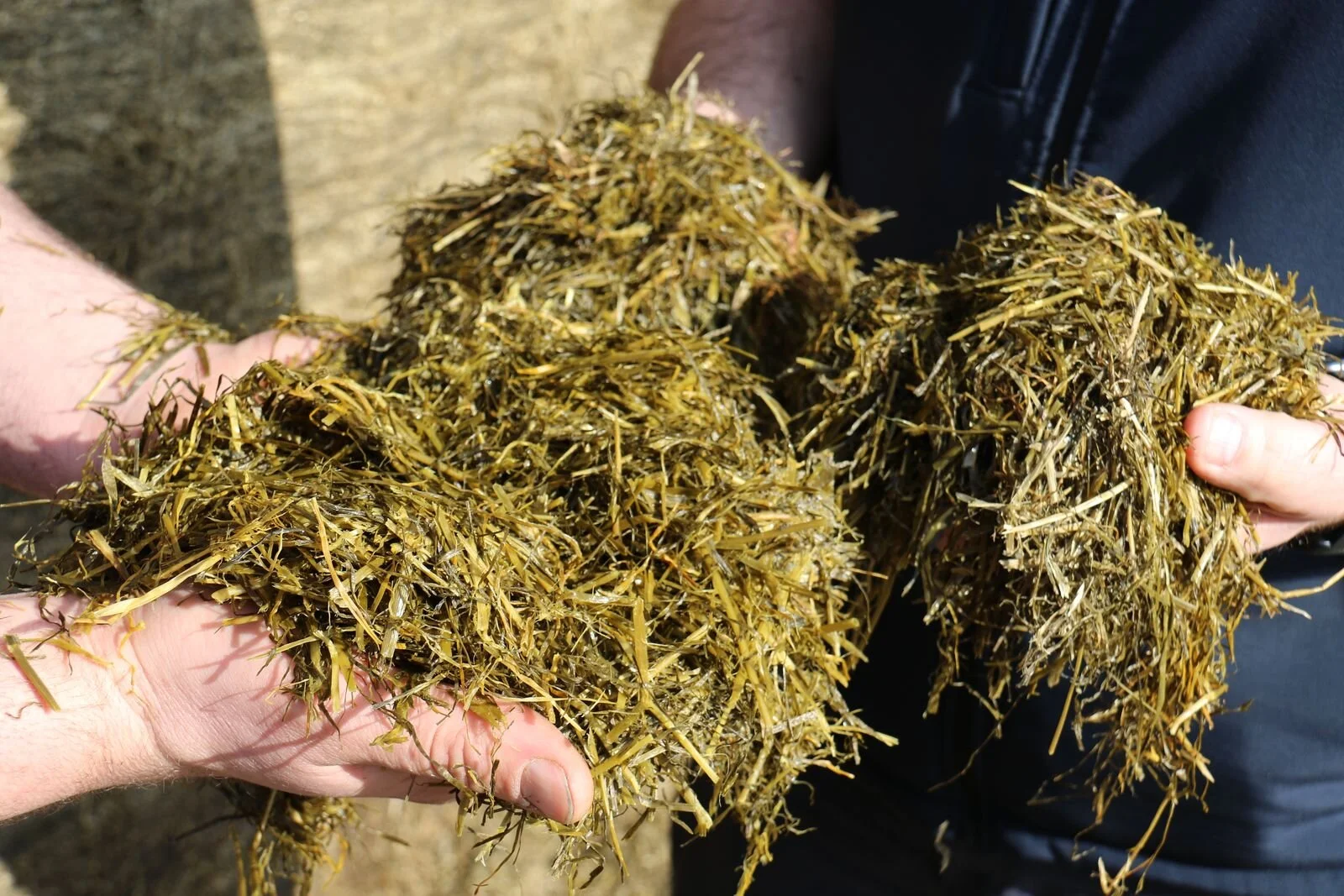Grass silage yields are 25-50% down in places this season, due to the dry spring. Add in shortages of alternatives, such as brewer’s grains, and unfortunately it’s not good news. Ultimately we need rain. But you can also take steps to conserve as much quality dry matter (DM) as possible from future grass cuts, and to minimise wastage.
Find out more from Jason Short, Volac Business Manager.
1. Cut correctly
Later-season grass cuts – even into autumn – could be vital for making up for poor first-cut volumes. However, mow them at the correct growth stage. Summer grass tries to go to head quickly. But digestibility falls by 0.5 D units a day after heading, and a reduction of 3.6 D units requires an extra 1.5 kg of concentrate per cow per day to make up that shortfall. Similarly, don’t cut too low aiming to claw back extra bulk. Regrowth will be slower and ‘bad’ microbes in the sward base will hinder the preservation. So you could lose more than you gain.
2. Wilt correctly
Avoiding over-wilting. It not only increases in-field losses, but grass that’s too dry is prone to heating losses due to yeast and mould growth, meaning DM is being ‘burned up’. Ideally, wilt to an optimum of 28-32% DM, but no drier, and in the shortest possible time.
3. Chop and consolidate correctly
Chop grass to the correct length for its % DM – for example 2.5cm for 30% DM. Correct chop length provides the foundation for a good consolidation to exclude air, which is crucial for a good fermentation and to reduce losses from heating. As a guide, grass at 30% DM needs 25% of its weight coming into the clamp per hour to be rolling it constantly for effective consolidation.
4. Don’t leave preservation to chance
Remember the value of a good additive. Ecosyl has been shown to give around 95% DM recovery – halving the losses of a natural, untreated fermentation – and to improve digestibility by an average of 3 D units over untreated silage in trials. For drier silage,
use a dual-acting additive to both improve the fermentation and prevent heating.
Find out more about using Ecosyl today.
5. Weigh-up other silage options
Where available, wholecrop winter wheat can provide 12-15 tonnes of DM per hectare. Harvesting it at 45-50% DM for fermented wholecrop offers an excellent balance between yield and starch content. As well as using effective clamp consolidation and sealing,
follow the same advice for a dual-acting additive as for grass silage for keeping clamps cool.


